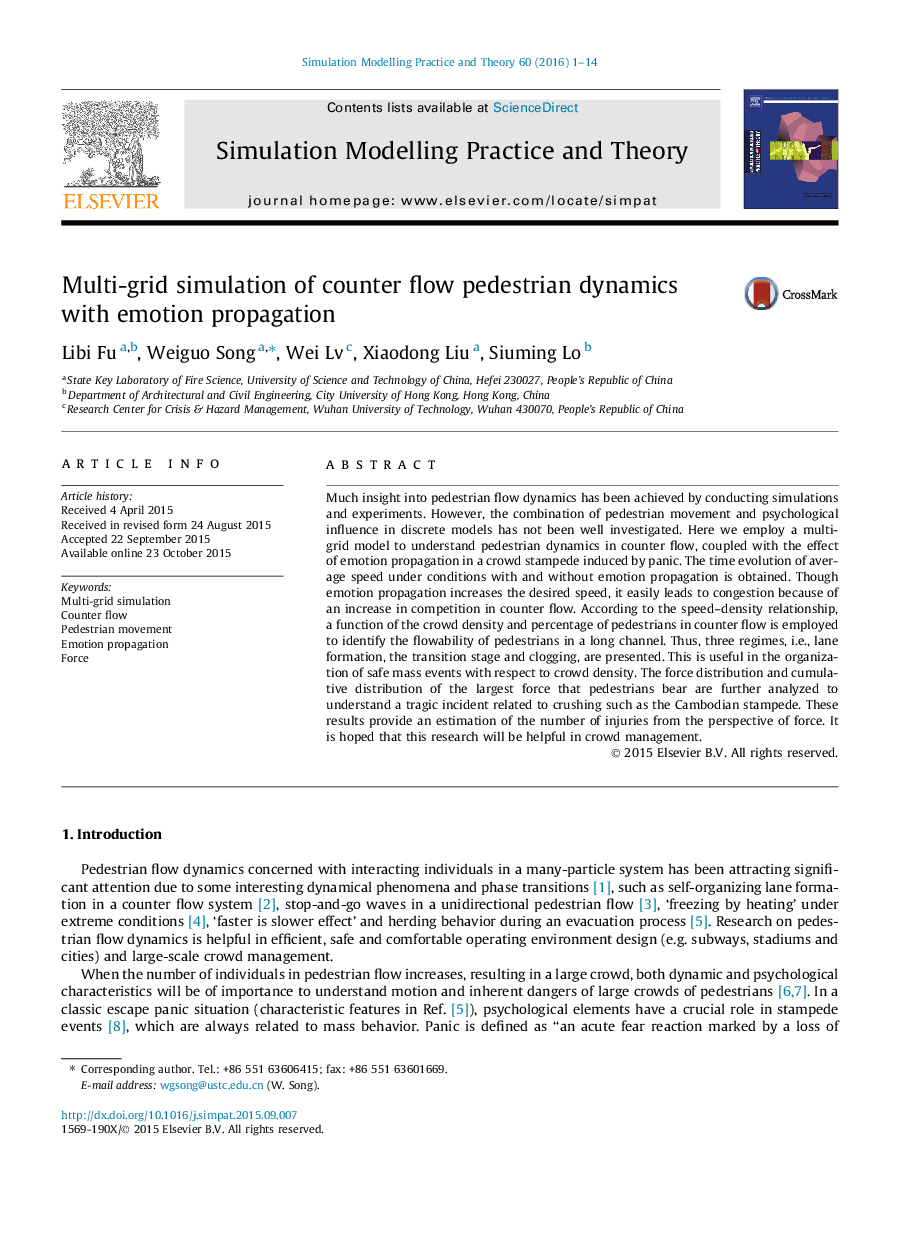| Article ID | Journal | Published Year | Pages | File Type |
|---|---|---|---|---|
| 492437 | Simulation Modelling Practice and Theory | 2016 | 14 Pages |
Much insight into pedestrian flow dynamics has been achieved by conducting simulations and experiments. However, the combination of pedestrian movement and psychological influence in discrete models has not been well investigated. Here we employ a multi-grid model to understand pedestrian dynamics in counter flow, coupled with the effect of emotion propagation in a crowd stampede induced by panic. The time evolution of average speed under conditions with and without emotion propagation is obtained. Though emotion propagation increases the desired speed, it easily leads to congestion because of an increase in competition in counter flow. According to the speed–density relationship, a function of the crowd density and percentage of pedestrians in counter flow is employed to identify the flowability of pedestrians in a long channel. Thus, three regimes, i.e., lane formation, the transition stage and clogging, are presented. This is useful in the organization of safe mass events with respect to crowd density. The force distribution and cumulative distribution of the largest force that pedestrians bear are further analyzed to understand a tragic incident related to crushing such as the Cambodian stampede. These results provide an estimation of the number of injuries from the perspective of force. It is hoped that this research will be helpful in crowd management.
